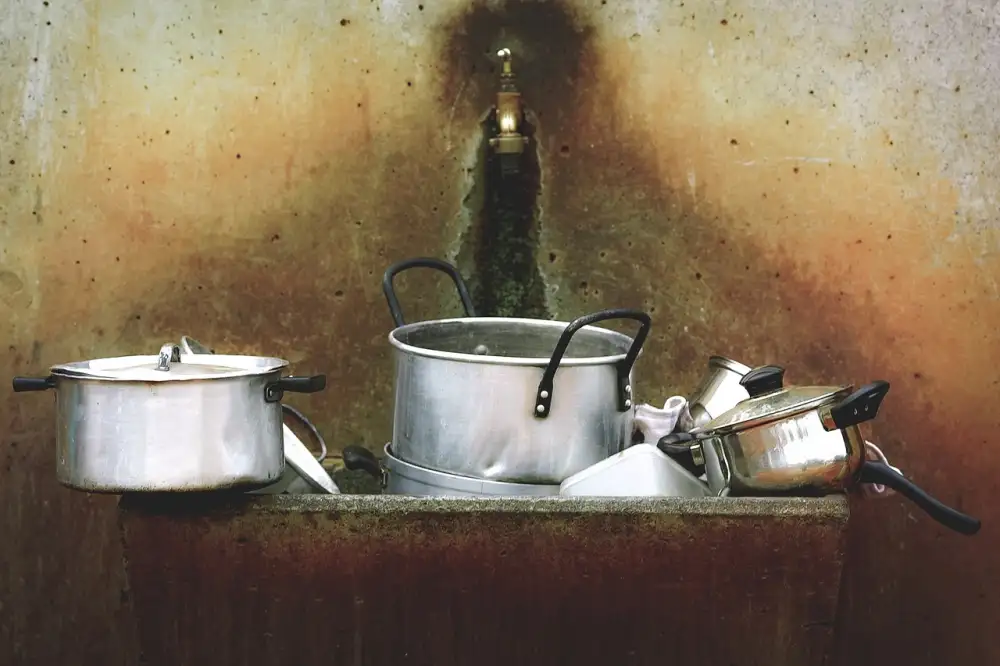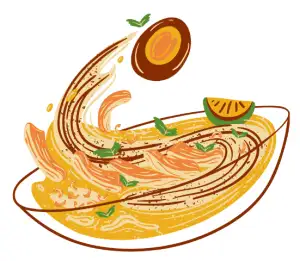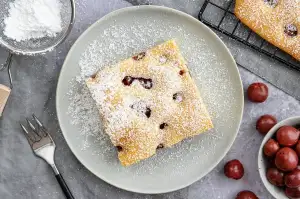Master the Art of Cooking with Stainless Steel: A Guide to Perfecting Your Culinary Skills

- Benefits of using stainless steel cookware for food preparation
- Preparing stainless steel cookware before use
- Choosing the right cooking techniques for stainless steel
- Tips for preventing food from sticking to stainless steel
- Maintaining and cleaning stainless steel cookware
- Recommended recipes for cooking with stainless steel
Stainless steel cookware has long been a staple in professional kitchens, and for good reason. Its durability, heat conductivity, and versatility make it a favorite among chefs and home cooks alike. Whether you're searing a steak, sautéing vegetables, or simmering a delicate sauce, stainless steel cookware provides the perfect canvas for culinary creativity. In this guide, we will explore the art of cooking with stainless steel and how to unlock its full potential in your kitchen. Get ready to elevate your cooking skills to new heights with this essential tool.
Benefits of using stainless steel cookware for food preparation
Stainless steel cookware offers numerous benefits for food preparation. Firstly, it is highly durable and long-lasting, ensuring that your investment will withstand the test of time. It is resistant to scratches, stains, and corrosion, making it ideal for everyday cooking. Additionally, stainless steel is non-reactive, meaning it won't interact with acidic or alkaline ingredients, preserving the flavor and quality of your dishes. Furthermore, stainless steel provides even heat distribution, allowing for precise cooking control and preventing hot spots. Lastly, its sleek and modern appearance adds a touch of elegance to any kitchen.
Preparing stainless steel cookware before use
Before you start cooking with your stainless steel cookware, it is important to properly prepare it. This will ensure that your food cooks evenly and doesn't stick to the surface. The first step is to wash the cookware with warm, soapy water to remove any manufacturing residue or dust. Rinse it thoroughly and dry it completely before using.
Next, you should season your stainless steel cookware by applying a thin layer of oil to the cooking surface. This helps create a natural non-stick coating and prevents food from sticking. Heat the cookware over medium heat until the oil starts to smoke slightly, then remove it from the heat and let it cool down.
After seasoning, you can start using your stainless steel cookware for cooking. However, if you notice any discoloration or stains on the surface after use, you can clean them off by soaking the cookware in a mixture of vinegar and water for about 30 minutes. Scrub gently with a soft sponge or cloth to remove any stubborn stains.
By properly preparing your stainless steel cookware before use, you can ensure that it performs at its best and provides you with excellent cooking results every time.
Choosing the right cooking techniques for stainless steel
When it comes to cooking with stainless steel, choosing the right cooking techniques is crucial for achieving the best results. Stainless steel cookware is known for its excellent heat conductivity and even distribution, making it ideal for a variety of cooking methods.
One of the most popular techniques for stainless steel is searing. The high heat retention of stainless steel allows you to achieve a beautiful golden crust on meats and vegetables. To do this, preheat your stainless steel pan over medium-high heat, add a small amount of oil or butter, and then place your ingredients in the pan. Allow them to cook undisturbed until they develop a nice caramelized exterior.
Another great technique for stainless steel is sautéing. This involves quickly cooking ingredients in a small amount of oil or butter over medium-high heat. The even heat distribution of stainless steel ensures that your ingredients cook evenly and retain their natural flavors and textures.
Stainless steel is also perfect for braising. This slow-cooking method involves searing meat or vegetables first, then adding liquid (such as broth or wine) and simmering on low heat until tender. The durability of stainless steel allows it to withstand long cooking times without warping or losing its shape.
Lastly, steaming is another fantastic technique for stainless steel cookware. Simply place a steamer basket in your pot filled with water, bring it to a boil, and then add your vegetables or seafood to the basket. The steam created will gently cook your food while preserving its nutrients and flavors.
By choosing the right cooking techniques for stainless steel, you can unlock its full potential in the kitchen and create delicious meals with ease.
Tips for preventing food from sticking to stainless steel
To prevent food from sticking to stainless steel cookware, there are a few tips you can follow. First, make sure the pan is preheated properly before adding any ingredients. This will create a non-stick surface and help the food cook evenly. Additionally, using oil or butter in the pan can also help prevent sticking. It's important to use oils with high smoke points, such as vegetable or canola oil, as they won't burn easily. Another tip is to avoid overcrowding the pan, as this can cause moisture to build up and lead to sticking. Lastly, using a spatula or tongs to gently lift and turn the food while cooking can help prevent it from sticking. By following these tips, you'll be able to enjoy hassle-free cooking with stainless steel cookware.
Maintaining and cleaning stainless steel cookware
Maintaining and cleaning stainless steel cookware is essential to keep it in pristine condition and ensure its longevity. Here are some tips to help you maintain and clean your stainless steel cookware:
1. Handwashing: Always wash your stainless steel cookware by hand using warm, soapy water. Avoid using abrasive scrubbers or harsh cleaning agents that can damage the surface.
2. Soak if necessary: If food is stuck on the surface, soak the cookware in warm, soapy water for a few minutes to loosen it before washing.
3. Use non-abrasive cleaners: For stubborn stains or burnt-on food, use non-abrasive cleaners specifically designed for stainless steel. Follow the instructions on the cleaner and rinse thoroughly.
4. Avoid chlorine bleach: Chlorine bleach can corrode stainless steel, so avoid using it when cleaning your cookware.
5. Dry immediately: After washing, dry your stainless steel cookware thoroughly with a soft cloth or towel to prevent water spots or potential rusting.
6. Polish occasionally: To maintain the shine of your stainless steel cookware, you can polish it occasionally with a specialized stainless steel cleaner or a mixture of vinegar and water.
By following these maintenance and cleaning practices, you can keep your stainless steel cookware looking as good as new for years to come.
Recommended recipes for cooking with stainless steel
1. Pan-Seared Salmon: Heat a stainless steel skillet over medium-high heat. Season salmon fillets with salt and pepper, then sear them in the hot skillet until golden brown on both sides. Finish cooking in the oven for a perfectly tender and flaky result.
2. Stir-Fried Vegetables: Use a stainless steel wok or skillet to quickly stir-fry your favorite vegetables. The even heat distribution of stainless steel ensures that your veggies cook evenly and retain their vibrant colors and crispness.
3. Pasta Primavera: Boil pasta in a stainless steel pot until al dente. In a separate skillet, sauté garlic, onions, and an assortment of seasonal vegetables until tender-crisp. Toss the cooked pasta with the vegetables, olive oil, grated Parmesan cheese, and fresh herbs for a delicious and healthy meal.
4. Chicken Marsala: Sauté chicken breasts in a stainless steel pan until browned on both sides. Remove from the pan and set aside. In the same pan, cook sliced mushrooms until golden brown, then deglaze with Marsala wine and chicken broth. Return the chicken to the pan and simmer until cooked through. Serve with mashed potatoes or rice.
5. Beef Stir-Fry: Slice beef into thin strips and marinate in soy sauce, ginger, garlic, and sesame oil for 30 minutes. Heat a stainless steel skillet or wok over high heat and stir-fry the beef until browned but still tender. Add your choice of vegetables like bell peppers, broccoli, or snow peas for a flavorful meal.
These recipes showcase the versatility of stainless steel cookware by allowing you to create delicious dishes with ease while enjoying all its benefits in terms of heat conductivity and durability.
In conclusion, stainless steel cookware is a must-have for any aspiring chef or home cook. Its durability, heat conductivity, and non-reactive properties make it an ideal choice for cooking a wide variety of dishes. By following the proper techniques and tips outlined in this guide, you can master the art of cooking with stainless steel.
Don't be afraid to experiment with different recipes and cooking methods using your stainless steel cookware. Whether you're searing a steak, sautéing vegetables, or simmering a sauce, stainless steel will deliver consistent and delicious results.
Remember to properly prepare your cookware before use and choose the right cooking techniques to prevent food from sticking. With regular maintenance and cleaning, your stainless steel cookware will last for years to come.
So go ahead and embrace the versatility of stainless steel in your kitchen. It's time to elevate your culinary skills and create mouthwatering meals that will impress both yourself and your guests. Happy cooking!
Published: 20. 11. 2023
Category: Food



